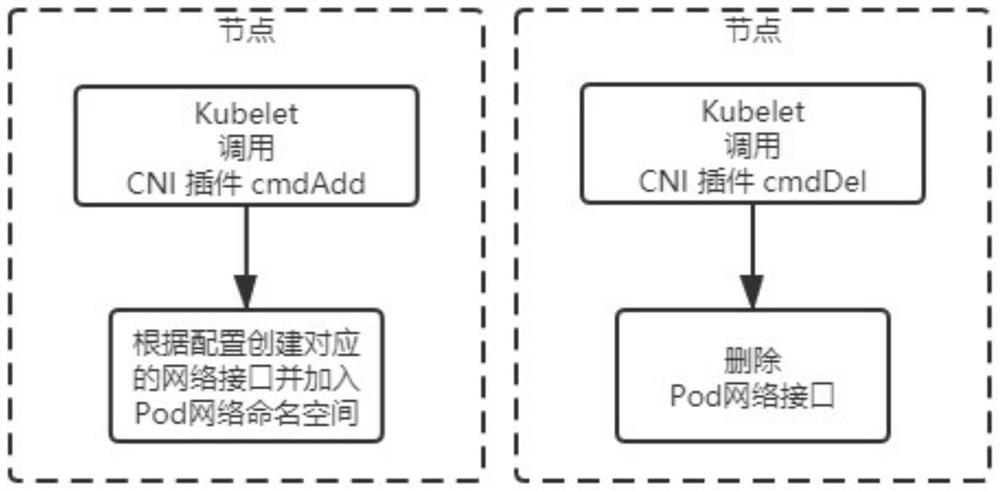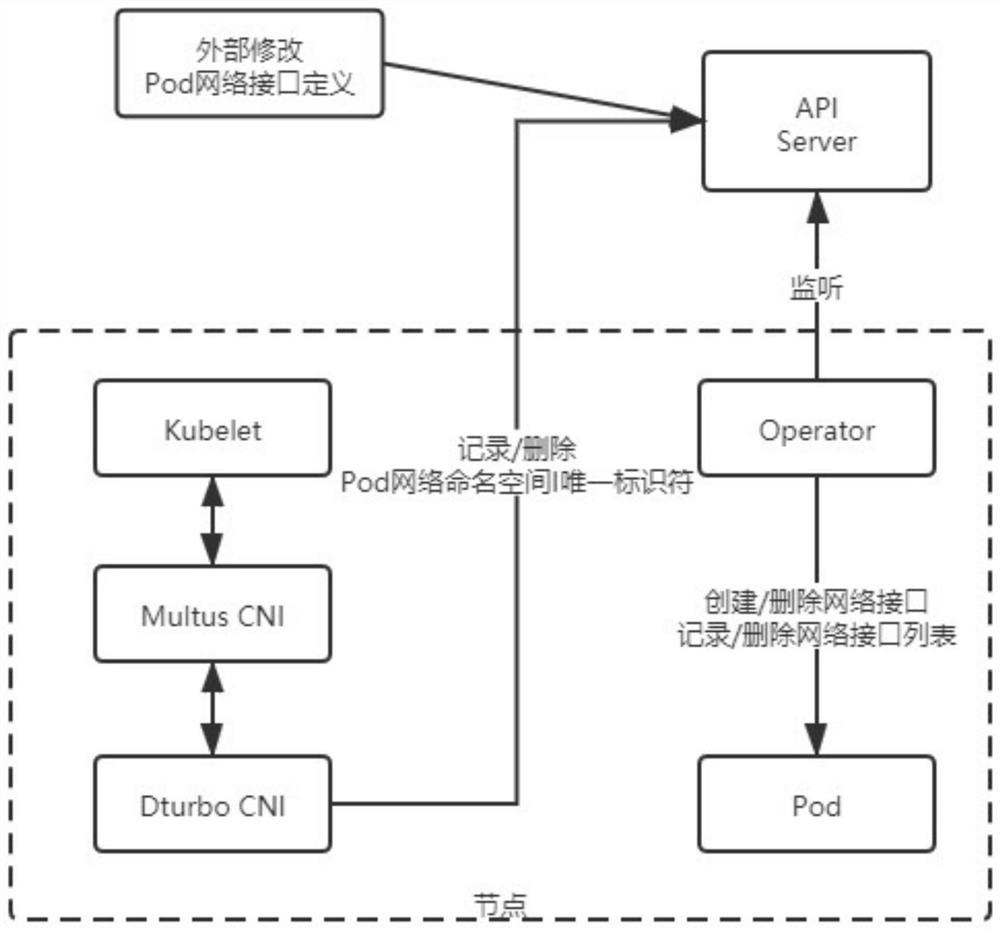Method and system for modifying Pod network interface during operation based on CNI plug-in in K8s
A network interface and network technology, applied in the field of modifying the Pod network interface, can solve the problems that the Pod’s network interface cannot be modified, cannot meet such requirements, and cannot dynamically access data sources, etc., so as to improve the overall performance and reliability, and apply Strong performance and high fault tolerance
- Summary
- Abstract
- Description
- Claims
- Application Information
AI Technical Summary
Problems solved by technology
Method used
Image
Examples
Embodiment Construction
[0083] The present invention will be described in detail below in conjunction with specific embodiments. The following examples will help those skilled in the art to further understand the present invention, but do not limit the present invention in any form. It should be noted that those skilled in the art can make several changes and improvements without departing from the concept of the present invention. These all belong to the protection scope of the present invention.
[0084] The embodiment of the present invention discloses a method and system for modifying the Pod network at runtime based on the CNI plug-in in K8s, such as figure 2 As shown, the system includes the following components: a node is a node in the K8s cluster, and its function is to run a physical machine or a virtual machine of a Pod. The API server is the K8s cluster API server, and the function of the API server is the cluster control center.
[0085] Among them, the node includes the following com...
PUM
 Login to View More
Login to View More Abstract
Description
Claims
Application Information
 Login to View More
Login to View More - R&D
- Intellectual Property
- Life Sciences
- Materials
- Tech Scout
- Unparalleled Data Quality
- Higher Quality Content
- 60% Fewer Hallucinations
Browse by: Latest US Patents, China's latest patents, Technical Efficacy Thesaurus, Application Domain, Technology Topic, Popular Technical Reports.
© 2025 PatSnap. All rights reserved.Legal|Privacy policy|Modern Slavery Act Transparency Statement|Sitemap|About US| Contact US: help@patsnap.com



